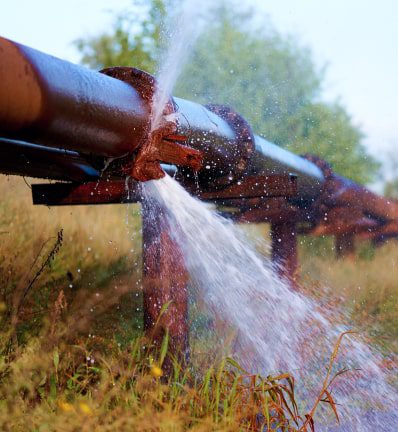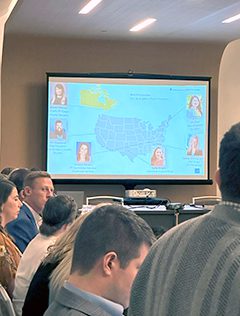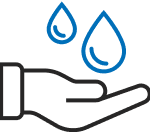Water Loss Control


Water Loss Control
Water loss control represents the efforts of water utilities to provide accountability in their operation by reliably auditing their water supplies and implementing controls to minimize system losses. Utilities incur real losses from pipeline leakage and apparent losses when customer water consumption is not properly measured or billed.
AWWA advocates the water audit method developed jointly by the International Water Association and AWWA. The IWA/AWWA Water Audit Method provides the best management practice tools and guidance water utilities need to efficiently manage their supplies.
Tools for Water Audit Analysis
AWWA Water Audit Software
The AWWA Free Water Audit Software is now available. This software is the industry standard tool for conducting the annual water audit and using the results to guide a program for cost-effective water loss control and revenue recovery. It first came out in 2005 and is now used throughout North America and in other countries around the world.
Version 6.0 (released 2020) represents a major evolution of this tool — incorporating more than 1,000 improvements from user-provided comments. Key upgrades include a new Interactive Data Grading feature; a new Performance Indicator Dashboard providing more visibility into how well you are doing and how you can improve; and a streamlined user experience.
Version 6.1 (released 2025) has all the functionality of 6.0, with the added feature of Carbon Calculations and the Carbon Balance, to quantify greenhouse gas emissions associated with leakage. With this feature, water utilities can quantify potential reductions in emissions associated with target leakage reductions.
AWWA Water Audit Compiler
The AWWA Water Audit Compiler© (Compiler) can be used to quickly assemble water audit data from multiple water utilities; allowing for comparisons of data across water utilities. The Compiler can also be used to compile multiple years’ of water audit data for a single utility; allowing the water efficiency history of a water utility to be viewed at a single glance.
A new Compiler (v6.0) is now available. The Compiler v6.0 will compile the data submitted in the AWWA Free Water Audit Software© Version 6.0 (FWAS v6.0) into a master table (Data sheet). The data can then be viewed in graphical form using the Compiler v6.0 built-in charts. If the user wishes to manipulate and visualize the data further, the data can be exported out of the Compiler v6.0. The Compiler v6.0 will only work with FWAS v6.0 files in the native “.xlsx” file type, and will not work with FWAS v6.0 files saved in a format other than “.xlsx”. The Compiler will not directly import older versions of the FWAS, but older versions can be added to the Compiler v6.0 by importing already-compiled audit data from a Compiler v5.0, using the “Add v5 Compiled” function in the Data sheet.
The previous Compiler (v5.0) is still available for compiling water audits in the FWAS v5.0.
Like the Audit Software, the Compiler was created in a Microsoft Excel® spreadsheet format and it works hand-in-hand with the Audit Software. The Compiler was developed to improve the management of water audit datasets containing multiple water audits in small or large number. It was originally devised to help state and regional water resources agencies to easily aggregate and analyze large datasets and to provide trending and analysis tools to guide the process.
Once data is assembled in the Compiler, graphics can be displayed and sorted easily with any of the audit inputs and outputs. The data gathered into the Compiler can also be exported to a separate Microsoft Excel® spreadsheet where the user can conduct further analysis of their own design.
Leakage Component Analysis Model
In 2014, the Water Research Foundation, with support from the US Environmental Protection Agency, published the final report and spreadsheet software tool for Project 4372a entitled Real Loss Component Analysis: A Tool for Economic Water Loss Control. The purpose of research project 4372a was to identify the best methods for conducting a leakage component analysis to be used to set a cost-effective leakage control strategy in a water utility. The project was also charged to employ these best practices in the creation of a spreadsheet software tool that works in complimentary fashion with the Audit Software. The key project deliverable was the Leakage Component Analysis Model (LCA Model).
Since the water audit results provide an annual real loss volume that is determined as a catch-all quantity remaining after all of audit components are input, very limited insight is given for leakage control purposes when compiling the water audit. The LCA Model was designed to pick up where the AWWA Free Water Audit Software leaves off, in terms of leakage assessments. The LCA Model provides the water industry with an easy-to-use spreadsheet tool to conduct a leakage component analysis, determine the water utility’s failure frequency analysis, provide guidance to set the economic leakage control intervention strategy, and display key water loss performance indicators.
Project 4372b entitled Water Audits in the United States: A Review of Water Losses and Data Validity summarizes state regulations on water loss reporting and analyzes 4,575 water audits (that follow AWWA water audit methodology) submitted to the California Urban Water Conservation Council, Georgia EPD, Texas Water Development Board, Tennessee Comptroller of the Treasury, and the Delaware River Basin Commission from 2011-2014. The results provide a national snapshot of water loss reporting, including an assessment of water audit validity and median results for key performance indicators.
Validated Water Audit Data
The AWWA Water Loss Control Committee has been collecting and validating water audit data from up to 30 North American utilities using the IWA/AWWA Water Loss Methodology from 2011 to 2017. In the inaugural year, water loss findings from 21 North American utilities were presented in an analysis report, and validated audits have been added to the North American dataset each subsequent year.
A subsequent analysis and peer-reviewed article was developed in 2016 for Journal AWWA. This project is known as the Water Audit Data Initiative (WADI), and was sunset in 2017. Data from all seven years of the WADI can be downloaded from the links below. The AWWA Water Loss Control Committee wishes to thank all utility participants over the years for agreeing to share their data (***as above – all links below except first one are from current DNN site. WP won’t allow macro enabled excel files).
Technical Resources
Reports
Manuals
Leakage Emissions Initiative – Water Loss Control Committee Report
Read the Report
Pressure Management: Options and Opportunities
Read the Report
Key Performance Indicators for Non-Revenue Water – Water Loss Control Committee Report
Read the Report
Assessment of Performance Indicators for Non-Revenue Water Target-setting and Progress Tracking
Read the Report
Governmental Policies for Drinking Water Utility Water Loss Control
Read the Report
Load More

Advertisement
Events With a Focus on Water Loss
See All Events

AWWA Policy Statements
AWWA’s policy statements are brief statements on protecting and improving water supply, water quality, management, and the interests of the public and the environment. They are written by consensus, subject to review and comment by AWWA committees, councils, and members. Because they represent AWWA’s position on these matters, they are approved by the AWWA Executive Committee of the board of directors.


Technical Committee Engagement
AWWA members are recognized globally for their industry expertise and their generosity in sharing that expertise for a better world through better water. AWWA members participate in committee activities, developing conference programs, writing technical manuals, developing standards, creating educational content and contributing to AWWA publications. Committee members primarily interact through conference calls, emails, and face to face meetings at conferences and events.
Water Loss Control Committee
Customer Metering Practices Committee
Advertisement

